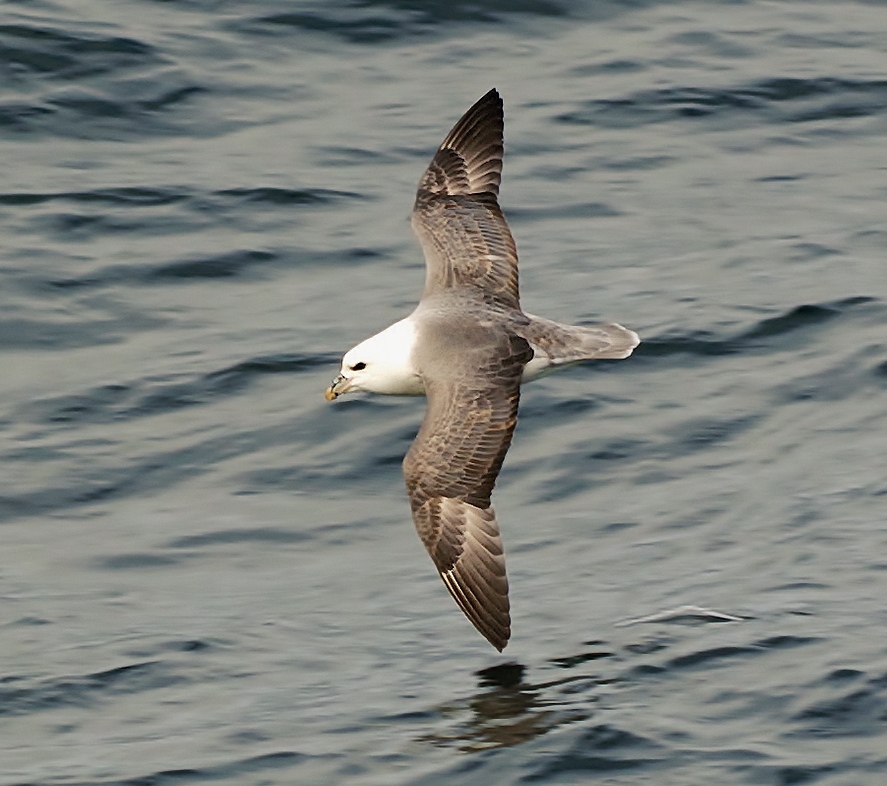 |
| Photo by Jörg Hempel (Wikipedia) |
Common name:
northern fulmar (en); fulmar-glacial (pt); fulmar boréal (fr); fulmar boreal (es); eissturmvogel (de)
Taxonomy:
Order Procellariiformes
Family Procellariidae
Range:
This species is found in the northern Atlantic, northern Pacific and Adacent areas of the Arctic ocean, ranging as far south as the British isles, Massachusetts, northern California and northern Japan. There are breeding colonies are mostly located in islands.
Size:
These birds are 45-50 cm long and have a wingspan of 100-115 cm. They weigh 700-900 g.
Habitat:
The northern fulmar is a pelagic predator, foraging on oceanic waters, mainly over continental shelves and along the limit of the continental shelves. They are found from the pack ice of Arctic waters to temperate waters. They breed in rocky islands and rocky cliffs up 1 km inland.
Diet:
They hunt fishes, squids and large zooplankton such as amphipods. They also take discarded fish from fishing vessels and carrion including whales, walruses and seal blubber.
Breeding:
Northern fulmars are monogamous and mate for life. They breed in April-October. The nest is a simple scrape on a grassy ledge or a saucer of vegetation on the ground, sometimes lined with bits of vegetation. There the female lays a single white egg, which is incubated by both parents for 47-53 days. The chick is fed by both parents and fledges 49-58 days after hatching. They reach sexual maturity at 5-12 years of age and may live for over 50 years.
Conservation:
IUCN status – LC (Least Concern)
This species has an extremely large breeding range and a global population estimated at 15-30 million individuals. The population in the northern Atlantic has increased in recent decades and also expanded in range, possibly as a result of the increased food availability from fish discards by fishing vessels. Pollution and mortality due to entanglement in fishing gear may be a problem in same areas.







